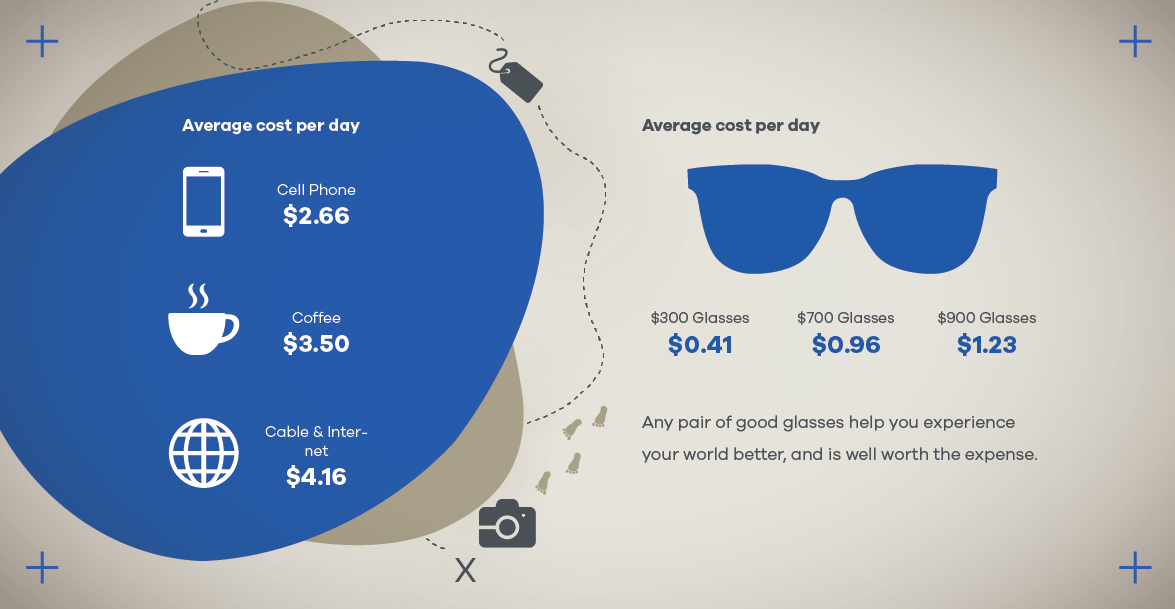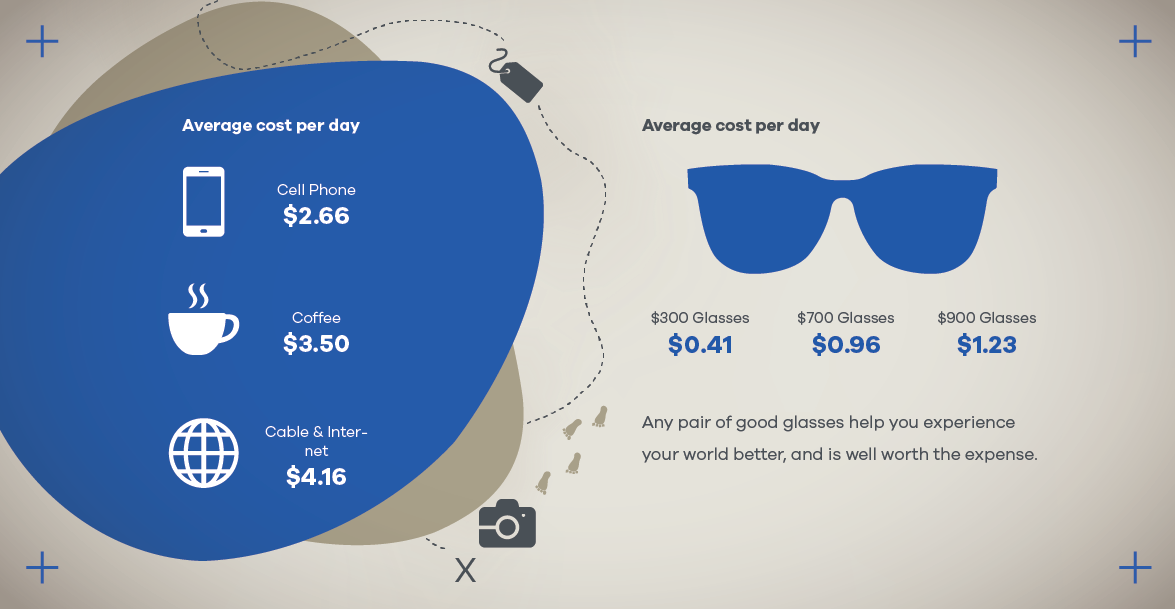Benefits of prescription sunglasses
① Disease prevention
Most patients aren’t aware that the sun can harm the eyes and the skin around the eyes. Use research to educate them during their visit. For example, the National Eye Institute has shown that UV rays can increase the risk of cataracts, and up to 20% of cataracts may be caused by overexposure to UV rays, according to the World Health Organization.
Other eye conditions can result from too much UV exposure – such as photokeratitis, macular degeneration, melanoma, and pterygium.
② Safety
Sunglasses protect against sun damage to the eyes and other elements when outdoors. Sunglasses guard against harsh wind, dust, sand, and other airborne debris that irritate the eyes or could scratch the cornea.
Make this point with your patients: when the eyes are protected and you’re seeing at your best, you’re also protecting others. For example: when driving with polarized lenses, your reaction time is noticeably faster than when not wearing sunglasses. Sunwear reduces glare and keeps you safe when navigating situations that require full attention, such as driving or riding a bike.
③ Less strain, fewer headaches
Your patients probably know about the term “blue light” as it relates to working in front of a screen for hours a day — and that it can cause digital eye strain and a number of other symptoms, such as headaches, tired or burning eyes, and more.
Your patients may not know that blue light can come from the sun, and in fact, 15 minutes in the sun equals 12 hours in front of a screen1. An estimated 25% to 30% of sunlight consists of solar blue light rays, so you can make an impression on your patients with this info while diving into the harm of solar blue light exposure.
④ Improved dark adaptation
Sunglasses increase visual clarity by blocking UV rays and reducing glare during the day. They can also have a positive impact on sight at night.
According to the American Optometric Association (AOA), studies have shown that daytime exposure to ordinary sunlight can produce temporary but cumulative aftereffects on dark adaptation and night vision. In addition to daytime benefits of sunglasses, your patients should know that high-quality polarized sunglasses can also help reduce night vision loss.
⑤ A better outdoor experience, year-round
Non-wearers often rely on compensatory behaviors (some extreme) when outdoors. Through discovery, you may find that your patients squint, wear non-prescription sunglasses, or avoid the sun completely. Prescription sun lens users have a better outdoor experience – even in winter. They enjoy the comfort, clarity, protection, and emotional freedom that comes with prescription sunglasses.
Checklist: helping your patient choose prescription sunglasses
Prescription sunwear is the best eye health solution to protect the eyes, eyelids, and skin around the eyes from sun-related damage. With so many advancements in lens technology just over the last decade, these are the features your patients should look for in prescription sunglasses:
- Indoor/outdoor transition (optional)
Some patients may be unwilling to carry two pairs of glasses and therefore think prescription sun lenses are a hassle. Approach this objection by recommending a photochromic option, providing wearers with the lens comfort they need in all different light situations possible. This allows a range of combinations that suit different wearer needs and can be tailored for almost all HOYA lens designs.
Choosing the right frames
Once you have piqued your patients’ interest in a pair of prescription sunglasses, move on to the frames. Though the quality of sunglasses is usually determined by the absorptive characteristics of the lenses, people typically focus on the comfort, fit, and appearance of the frame.
Frame selection is even more important for people who need prescription sunglasses. These patients often believe they have fewer choices in frame styles than nonprescription wearers. Fortunately, you can tell them that prescription sun lenses are not required to be fit in sunglass frames, specifically. They can be fit in almost every frame in your office.Your patients (including contact wearers) do not have to sacrifice fashion for functionality. Lenses like our Sensity® Shine sun lenses offer patients more: extra darkness outdoors, extra style and exclusive look, 100% protection against UV rays, and glare reduction.
Reference our white paper about choosing the right sunglasses frames for your patients.



